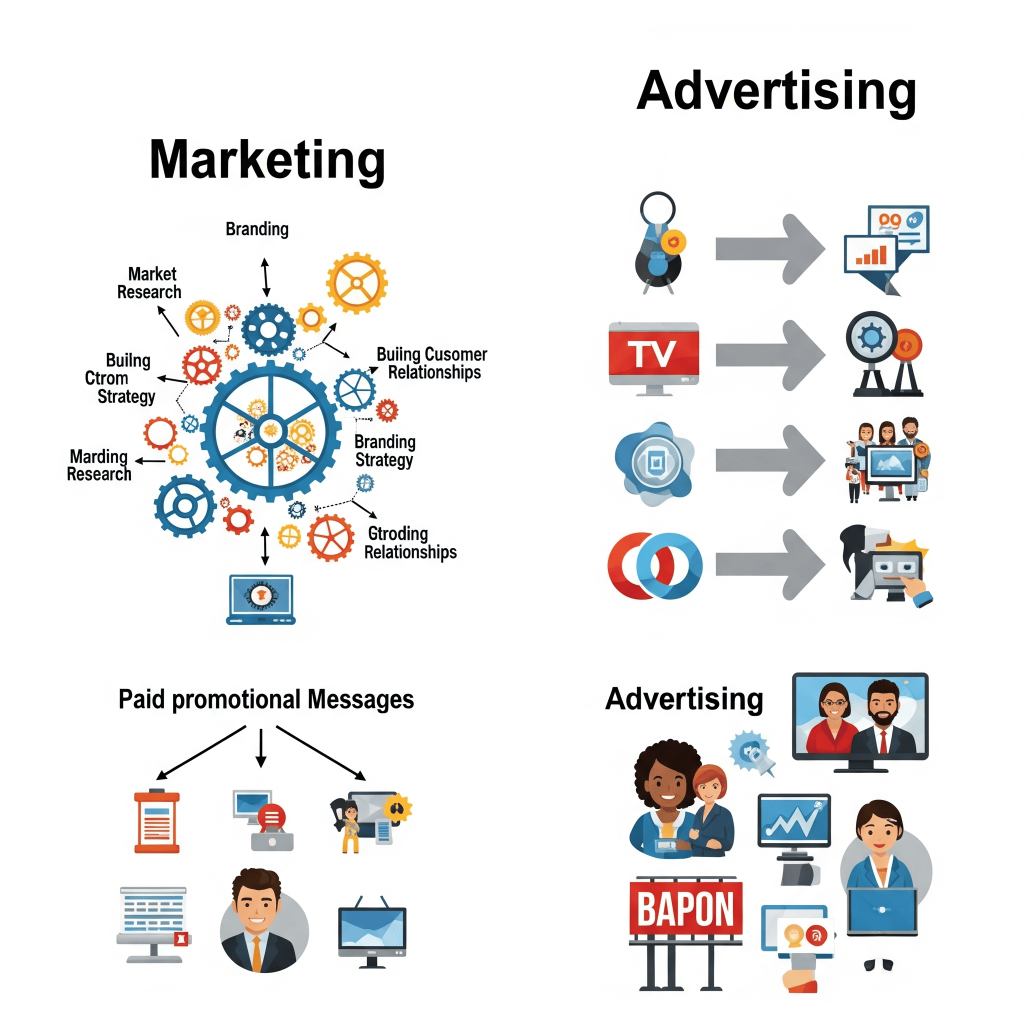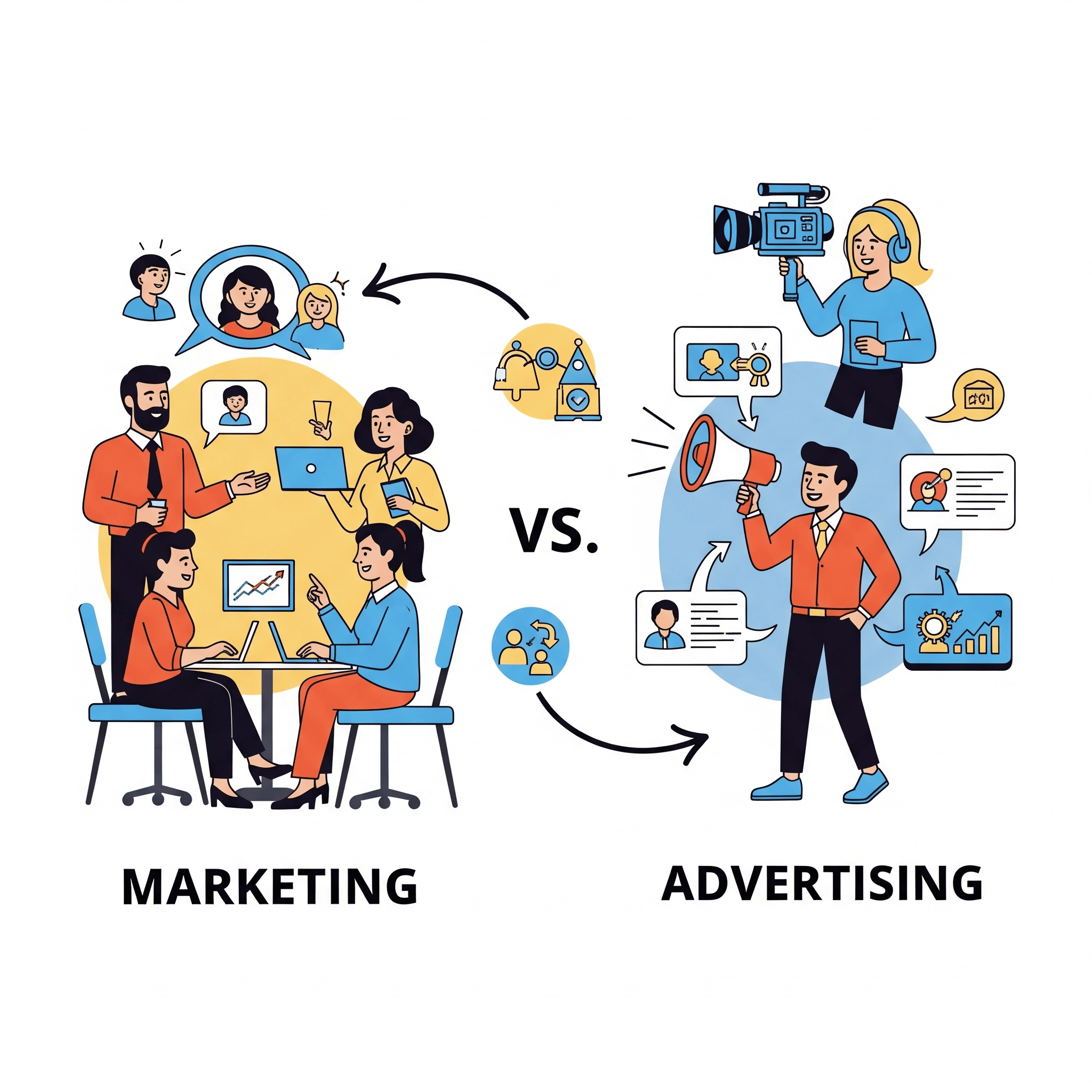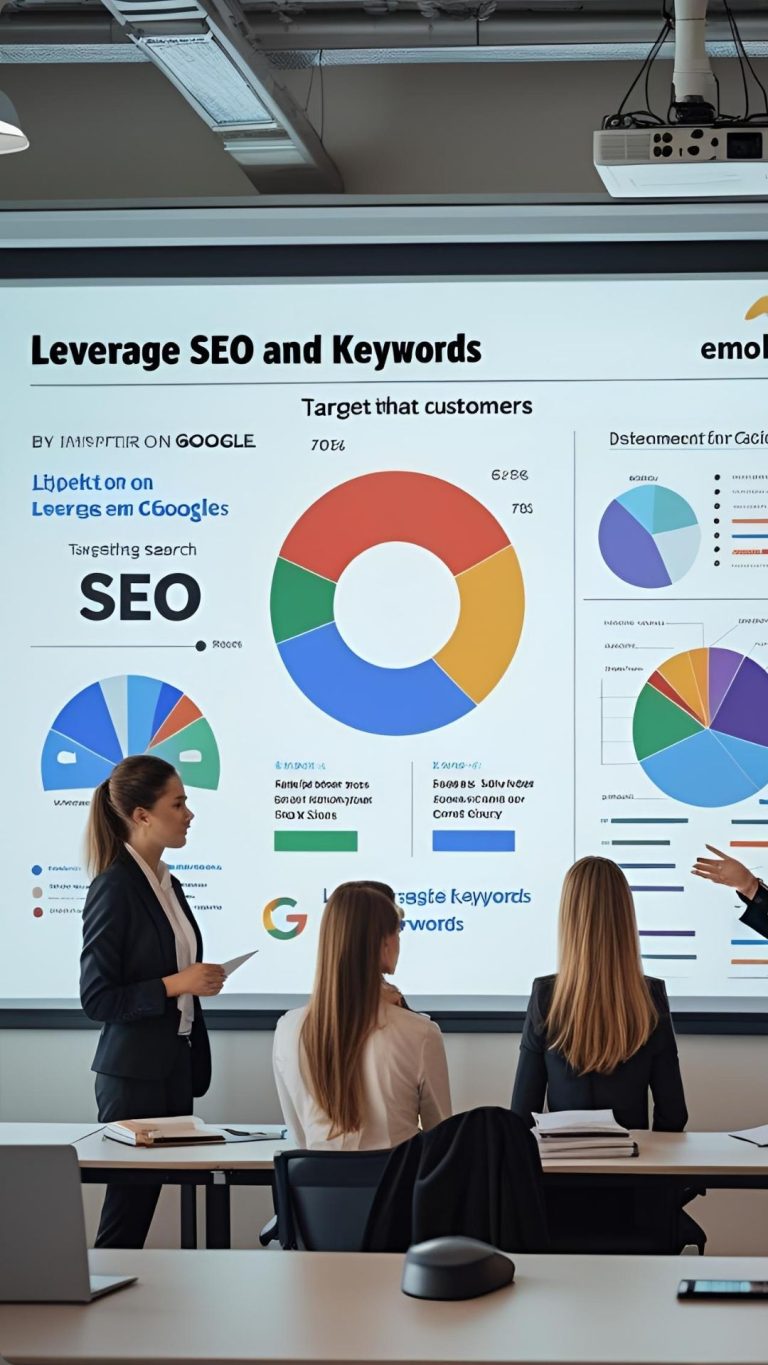What is the Difference Between Marketing and Advertising?
Difference between marketing and advertising, the terms marketing and advertising are generally used interchangeably. Although they go hand-in-hand and collaborate to meet business objectives, they are not synonymous.

Marketing vs Advertising: What’s the Real Difference?
Knowing the difference between the two is important for businesses, entrepreneurs, and for anyone who wants to establish a solid brand or promote a product or service successfully.
Let’s explore what each term really means and how they differ from one another.
Understanding the Difference Between Marketing and Advertising
Marketing
Marketing is the comprehensive process of promoting and selling products or services, including market research, branding, pricing, product development, and distribution. It involves identifying customer needs and desires, developing products to meet those needs, and crafting strategies to communicate and deliver value to customers.
Marketing is a long-term, strategic role. It doesn’t begin when the product is ready; it starts years before. It encompasses market analysis, knowledge of the competitors, segmentation of the audience, and determination of the optimum method to target the potential customers. Each action is planned thoroughly to contribute to the overall business objectives.
Building Blocks of Marketing:
- Market Research: Knowing what the customers need and where the gaps lie in the market.
- Target Audience Identification: Understanding who the customers are.
- Product Development: Creating products according to customer requirements.
- Pricing Strategy: Establishing a competitive and profitable price.
- Distribution: Choosing where and how the product shall be offered.
- Branding: Developing an individual identity and voice for the brand.
- Promotion: Telling the product’s worth — and that is where advertising enters the picture.
What is Advertising?
Advertising is a subcategory of marketing. Advertising is the paid marketing of a product, service, or brand across multiple media including television, radio, print media, digital media, and social media. The main goal of advertising is to inform, persuade, and remind people about a business and its products.
Advertising is tactical and action-oriented. It’s about producing engaging content that prompts customers to take certain actions, including buying something, checking a website, or subscribing to a service.
Most Popular Forms of Advertising:
- TV and Radio Ads
- Print Advertisements (Newspapers, Magazines)
- Digital Ads (Google Ads, Facebook Ads, Instagram Ads)
- Billboards and Out-of-home Ads
- Influencer and Affiliate Marketing

The Key Difference Between Marketing and Advertising
There are some main differences between the two:
| Aspect | Marketing | Advertising |
|---|---|---|
| Scope | Broad and strategic | Narrow and specific |
| Function | Includes research, planning, branding, pricing, etc. | Concerned with paid promotional communication only |
| Objective | Recognize and satisfy customer demands | Persuade and inform customers to act |
| Timeframe | Long-term, sustained process | Short- to medium-term campaigns |
| Channels Used | Social media, PR, SEO, events, branding, email, etc. | Paid media like TV, digital ads, and billboards |
| Role in Business | Guides overall product and business strategy | Executes one piece of the promotional puzzle |
A Real-World Example
Suppose a new organic skincare brand is being launched by a company.
- Marketing begins by identifying target consumers (e.g., health-conscious millennials), researching competitors, designing eco-friendly packaging, setting a price, and planning product distribution through channels like online stores or retail outlets.
- Next, the business uses advertising to promote the product through Instagram ads, YouTube influencer partnerships, and Google search ads targeting people looking for “natural skincare solutions.”
Without advertising, marketing would be directionless. Without marketing, a business may struggle to reach a large enough audience through advertising to generate sales. They are two sides of the same coin but not one and the same.
Why the Difference Between Marketing and Advertising Matters
It’s important to understand the distinction between advertising and marketing because it allows companies to utilize resources efficiently, have proper goals, and measure success accordingly. A phenomenal ad will fail without the proper marketing strategy behind it — one that makes the product fulfill actual needs and gets positioned properly in the market.
In addition, current marketers should adopt a holistic strategy, combining various strategies like content marketing, SEO, public relations, and social media interaction — not solely depending on advertising.
Conclusion
To remove the key phrase “advertising exists under the umbrella of marketing” while keeping the meaning clear, you can rephrase it like this:
✅ Rewritten Version (without the key phrase):
In short, marketing covers a wide range of activities, and advertising is just one of the tools used to promote a product or service.
Would you like more variations with a slightly different tone (e.g., casual, academic, persuasive)?. Marketing involves the research, planning, branding, and strategy that form the basis for effective business promotion. By contrast, advertising leverages paid communication to execute that strategy and deliver results..
By understanding the distinction between the two so definitively, businesses and professionals can construct stronger campaigns, engage more deeply with customers, and ultimately achieve long-term success.







